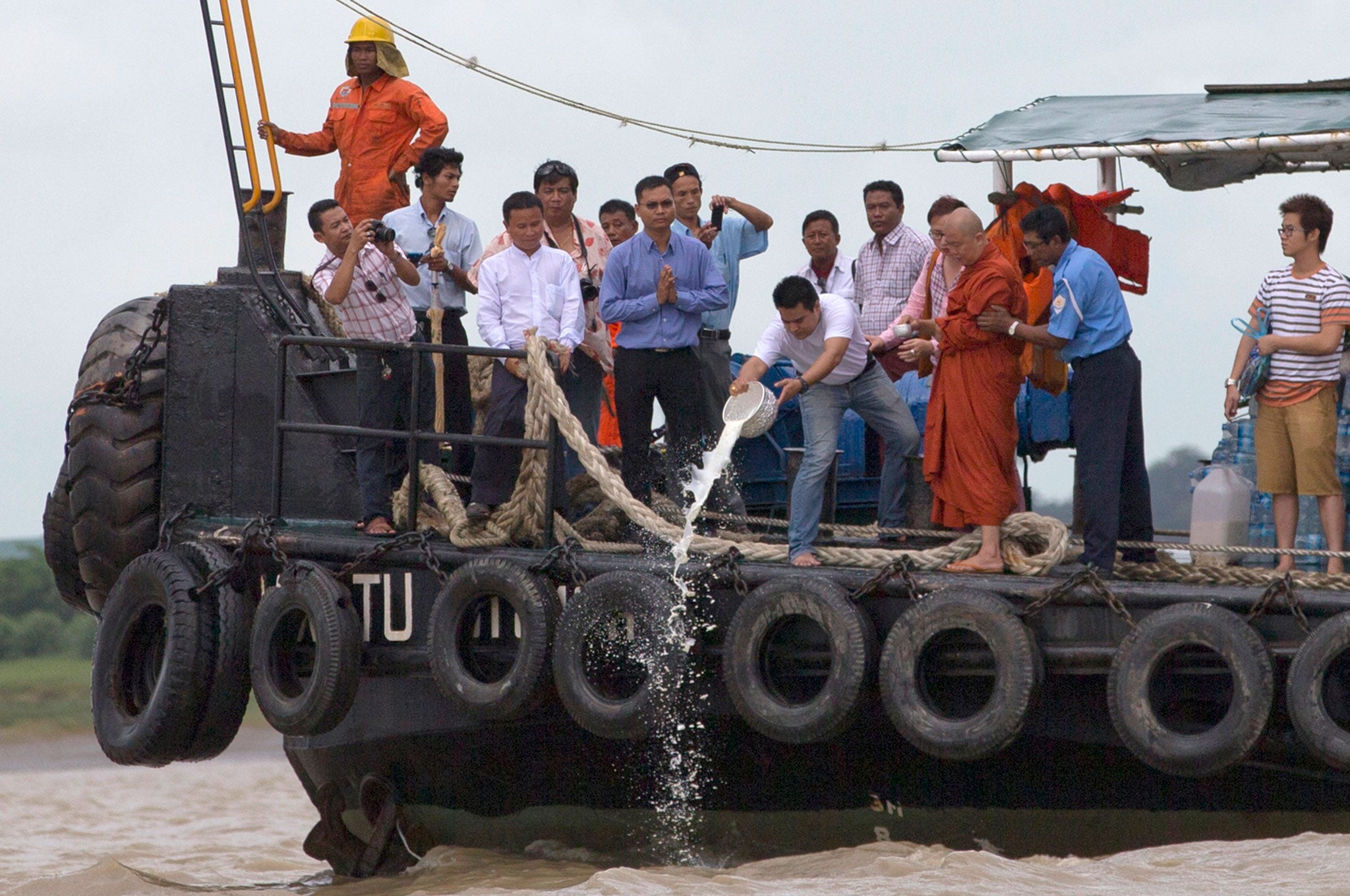Buddhist prayers for divers searching for Burma's lost bell
After numerous salvage operations, the latest attempt relies on spiritual guidance rather than state-of-the-art equipment

Divers stand on the edge of a small wooden fishing boat gazing at the murky, choppy waters. After receiving blessings from Buddhist monks, they lower their masks and plunge into the Rangoon river, clinging to garden hoses that will act as primitive breathing devices during their descent.
From the banks, thousands of spectators look on, praying the men will find the world's largest copper bell, believed to have been lying beneath the riverbed for more than four centuries. Weighing an estimated 270 tons, it is a symbol of pride for many in this country of 60 million that only recently emerged from a half-century of military rule and isolation.
For the first time, search crews are relying mainly on spirituality rather than science to try to find the bell. Burma's superstitious leaders believe reclaiming the treasure is important if the nation is ever to regain its position of glory as the crown jewel of Asia.
King Dhammazedi was said to have ordered the bell to be cast in the late 15th century, donating it soon after to the Shwedagon Pagoda, Burma's most sacred temple which sits on a hilltop in the old capital, Rangoon.
The bell was reportedly stolen 130 years later, by a Portuguese mercenary who wanted it taken across the river to be melted down and turned into cannons. But the vessel sank at the confluence of the Rangoon and Pegu rivers and the Pazundaung Creek.
Most people in Burma believe the bell is still in the riverbed. But efforts to locate it with sonar imaging and other hi-tech equipment have failed, and some historians now question whether it even exists.
The latest operation – which is expected to last up to 45 days and to cost $250,000 (£151,000) – is being headed by a former naval official, San Lin, who told reporters last month that he was one of the reincarnations of the 14 guardians of the bell and could speak to the spirits of those who have blocked past retrieval efforts; he was widely ridiculed.
But accounts of the recovery efforts and rumours that the bell has been spotted have sent thousands of spectators flocking to the river. Owners of small craft, shuttling passengers to within a few meters of the divers' boats, are doing brisk business, with dozens of wooden, canoe-like vessels lining the rocky banks.
On the banks, men and women charge 200 kyat (10p) for photocopied pamphlets describing the bell and its remarkable history. Food and drink stalls have popped up.
"We came because, as Buddhists, we are responsible to pray for the bell to get it back to its original place," said Tin May.
But after the divers plunge into the water ,some resurface within minutes because the currents are so strong. Chit San Win, a historian who has taken part in several of the searches in the past two decades, wants to believe the story of the bell. But he has little faith in the spiritual search: "The bell cannot be located with the help of astrology or spirits," he said. "It is just like consulting an astrologer to find a lost cow."
AP
Subscribe to Independent Premium to bookmark this article
Want to bookmark your favourite articles and stories to read or reference later? Start your Independent Premium subscription today.

Join our commenting forum
Join thought-provoking conversations, follow other Independent readers and see their replies